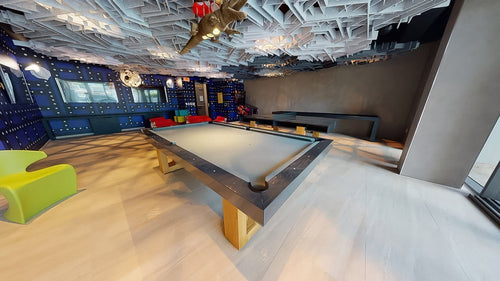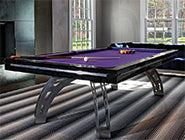Enjoy our modern designs
Estimated Read Time: 7 mins
In pool and other cue sports, the bridge is more than just a support—it’s the foundation of precision shot-making. Whether it’s your hand forming a natural bridge or a mechanical device designed to guide your cue, the bridge is essential for stability and accuracy. This blog explores the rich history and technical evolution of the cue bridge, shedding light on how this simple tool has shaped the game.
Table of Contents
Historical Background
The concept of the bridge dates back to the earliest days of billiards. Initially, players relied solely on their hands to create a stable support for the cue. Early players crafted their own technique, placing their hand in various positions to ensure a consistent stroke. As the game evolved, so did the methods for bridging.
Over time, as players sought greater accuracy and consistency, the idea of a mechanical bridge emerged. These devices were designed to provide a more uniform platform than a hand could offer, particularly in challenging shots or when the table layout made a natural bridge difficult. Innovations in materials and design led to the development of specialized cue rests and bridges, popular in both competitive play and exhibitions. Today, the bridge—whether formed by hand or by a mechanical device—is recognized as a critical tool in a player's arsenal, reflecting centuries of incremental improvement in cue sports technique.
Technical Breakdown
Hand Bridge
The most common form of bridging, the hand bridge, involves placing your hand on the table to create a stable base for the cue. There are different types:
- Open Bridge: Fingers spread to form a U-shape, offering maximum visibility and flexibility. Ideal for shots where you need a clear line of sight.
- Closed Bridge: The cue is threaded through a loop formed by the fingers. This provides extra control and stability, often used in more demanding shots.
Mechanical Bridge
In scenarios where a hand bridge isn’t feasible—like when the cue ball is snookered—a mechanical bridge comes into play. These devices are engineered to replicate the stability of a natural hand, allowing for consistent cue elevation and accurate stroke guidance. They vary in design, but all aim to reduce the variability that comes with manual bridging.
Technique and Stability
Regardless of whether you’re using a hand or a mechanical bridge, the goal is the same: to minimize cue movement and maximize shot accuracy. A well-constructed bridge keeps your cue aligned and steady, letting you focus on precise cue ball control and accurate aim. The evolution from rudimentary hand bridges to advanced mechanical devices underscores how critical stability is in cue sports.
Adaptation and Innovation
Over the years, the bridge has adapted to suit various playing conditions and styles. Modern players often switch between different types of bridges depending on the shot at hand, reflecting a deep understanding of both the tool and the game. Advances in materials—like lightweight metals and high-grade plastics—have further refined mechanical bridges, making them durable, reliable, and nearly indispensable in professional play.
Strategic Applications
- Enhanced Precision: A solid bridge allows for smoother, more consistent strokes. Whether you’re executing a delicate cut or a powerful break, the right bridge gives you the stability needed for high-precision shots.
- Overcoming Obstacles: When the cue ball is out of reach or the table layout makes a natural bridge challenging, a mechanical bridge becomes a strategic asset. It opens up shot opportunities that would otherwise be nearly impossible to execute.
- Consistency in Competitive Play: For serious players, the bridge is a constant companion. Its evolution has contributed significantly to the standardization of cue sports technique, ensuring that players can focus on strategy and shot-making without worrying about instability.
Conclusion
The bridge in cue sports is a testament to both tradition and innovation. From the humble hand bridges of early billiards to the sophisticated mechanical devices of today, the evolution of the bridge has been pivotal in shaping the modern game. Mastering your bridge—whether it’s a natural hand form or a high-tech tool—is key to improving your accuracy, consistency, and overall performance on the table. Embrace the art of bridging, and you’ll find that a solid foundation can turn even the most challenging shots into winning plays.
